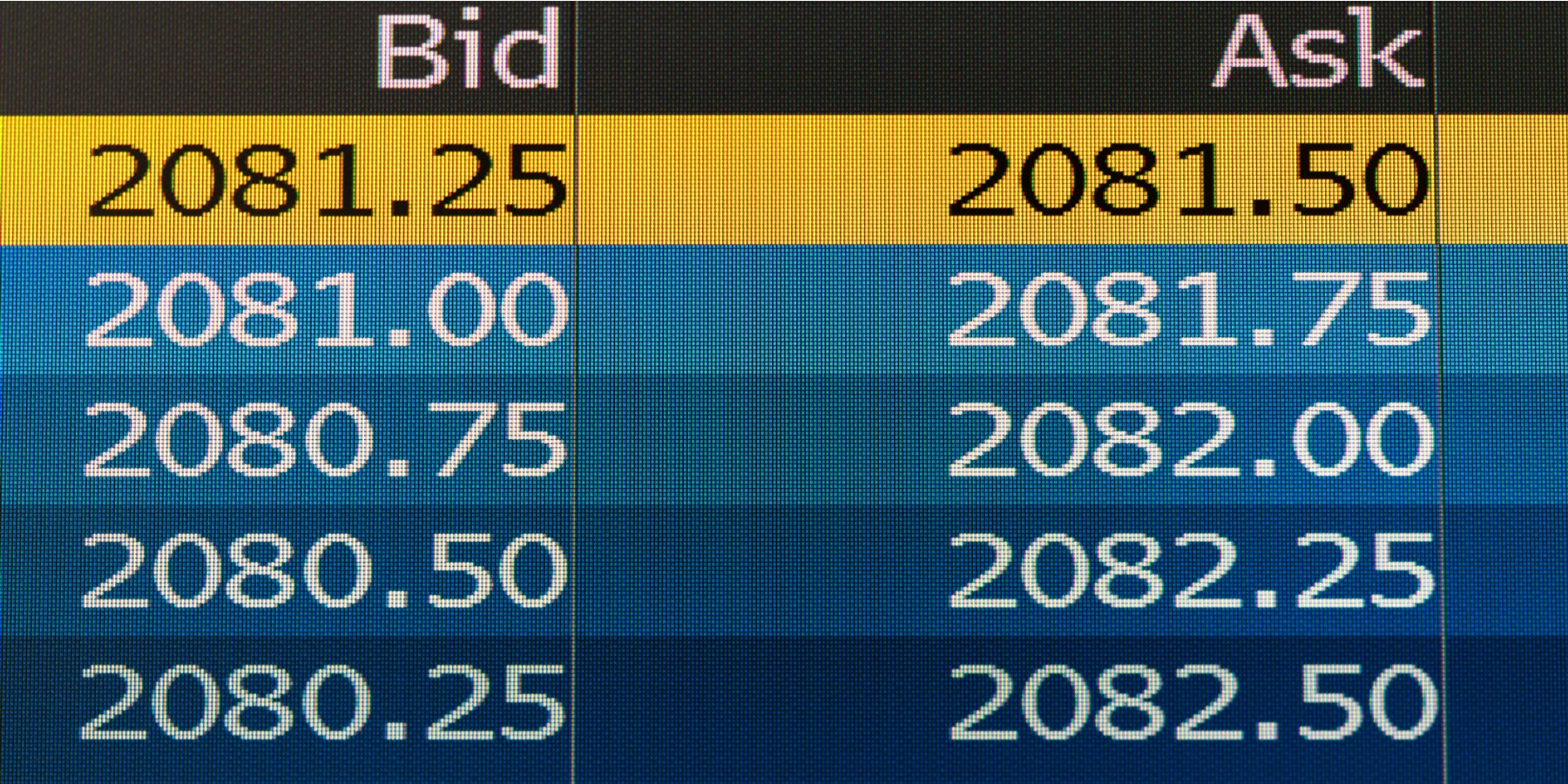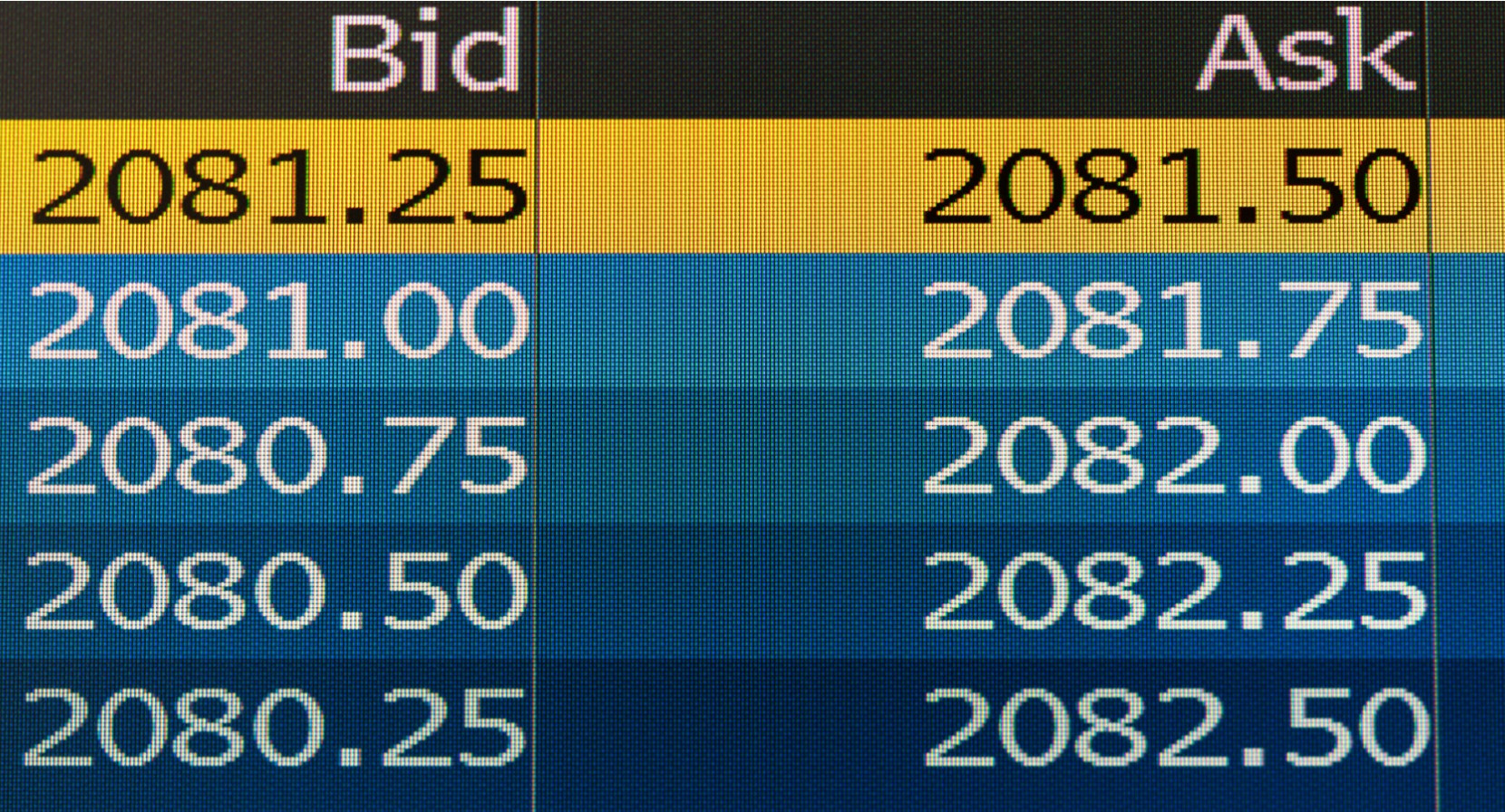An SMI member wrote recently, asking about a potential alternative to GLD, the gold fund used in Dynamic Asset Allocation. Specifically, he wondered about IAU since its portfolio composition is the same as GLD (physical gold), has generated nearly identical returns, has a lower expense ratio, and, unlike GLD, trades commission-free at Fidelity.
At first glance, IAU does, indeed, seem like a suitable alternative. And for some investors, it may be. However, for other investors, it might not be. The differences between the funds highlights the importance of considering the costs associated with different funds.
Mind the spread
Both GLD and IAU are exchange-traded funds. As such, they are priced throughout the day like stocks, rather than being priced once a day (after the market closes) like traditional mutual funds. That means they carry a bid price (how much buyers are willing to pay) and an ask price (how much sellers are willing to take), resulting in a bid/ask spread (the difference between the two prices). Ask prices are higher than bid prices because sellers want to sell high and buyers want to buy low.
While the bid/ask spread is there for all to see on brokerage web sites, your statements won’t tally its impact on your portfolio, which is why it’s often thought of as a “hidden” trading cost.
If you use “market orders” to execute your trades, which SMI generally recommends, you will buy shares of an ETF at the next available ask price. But when you sell those shares, you will get the next available bid price.
As a general rule of thumb, it’s best to buy shares of a stock or ETF with a very small bid/ask spread, such as $0.01. While changes in the share price will play the biggest role in determining your profits, the bid/ask spread will impact your profits as well. Buying or selling 100 shares trading with a $0.01 bid/ask spread will "cost" you an extra $1.00.
More to the story
Now here’s an aspect of the bid/ask spread that usually goes overlooked. The share price will play an important role in your costs as well.
As mentioned earlier, both GLD and IAU are designed very similarly and they’ve generated very similar results. It turns out that they both have a bid/ask spread of $0.01 as well. But that doesn’t mean that their bid/ask spreads will cost you the same amount of money when you trade them.
You see, GLD’s ask price (as of this morning) is $144.77 whereas IAU’s ask price is $14.70. If you were putting $25,000 into either one, you’d end up buying 172 shares of GLD or 1,700 shares of IAU. Multiplying the $0.01 bid/ask spread across the number of shares means you’d end up paying a hidden cost of $1.72 for GLD and $17 for IAU when you bought or sold either fund, because you’re trading 10 times the number of shares with IAU.
Even more to the story
As if this weren’t complicated enough, it’s also important to factor in a fund’s expenses. Sticking with our GLD vs. IAU example, IAU has a lower expense ratio — 0.25% vs. 0.40% for GLD. So, every $1,000 invested, IAU costs $2.50 vs. $4 for GLD if held for one year.
Whereas commissions and the bid/ask spread cost are fixed, the price you’ll pay for the expense ratio depends on how long you hold your investment. A $100,000 investment with an expense ratio of 0.5% will cost you $500 if you hold it for one year or $250 if you hold it for six months, whereas you’ll pay the same commission and bid/ask spread cost no matter how long you hold the investment.
The following examples show the costs of investing in GLD vs. IAU with two different investment amounts and over the course of two different holding periods, and how the fixed and variable expenses play out. The tables assume the commissions were paid twice (once when buying, and again when selling) as were the bid/ask spread costs.
$25,000 Investment | ||||
3 Months | 6 Months | |||
ETF | GLD | IAU | GLD | IAU |
Shares | 172 | 1,700 | 172 | 1,700 |
Commissions | $9.90 | $0 | $9.90 | $0 |
Bid/Ask Spread Costs | $3.44 | $34.00 | $3.44 | $34.00 |
Expenses | $25.00 | $15.63 | $50.00 | $31.25 |
Total Cost | $38.34 | $49.63 | $63.34 | $65.25 |
$100,000 Investment | ||||
3 Months | 6 Months | |||
ETF | GLD | IAU | GLD | IAU |
Shares | 690 | 6,802 | 690 | 6,802 |
Commissions | $9.90 | $0 | $9.90 | $0 |
Bid/Ask Spread Costs | $13.80 | $136.04 | $13.80 | $136.04 |
Expenses | $100.00 | $62.50 | $200.00 | $125.00 |
Total Cost | $123.70 | $198.54 | $223.70 | $261.04 |
What’s an investor to do?
In all four examples, GLD is the lower-cost option, despite Fidelity’s commission and the fund’s higher expense ratio. Because of its lower share price, IAU’s bid/ask spread costs made it more expensive.
Could IAU still be an adequate substitute for GLD? It could, especially for those who add to their DAA portfolio each month via dollar-cost averaging. Even for those who are not adding to their portfolios, especially if their portfolio is relatively small, the cost difference may not be all that significant (as the top table shows). Still, for most members using DAA, GLD is still the fund of choice.
But this is about more than just the decision of which gold fund to use. It’s about gaining a better understanding of how various expenses impact your investments through the interplay of holding periods and bid/ask spreads, and the surprising role that share price can have.









